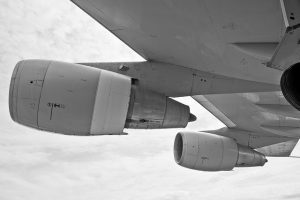 The U.S. Federal Aviation Administration has given aerospace companies the green light to conduct supersonic flight tests over land. Previously, supersonic jets were required to fly over the sea. As a result, aerospace companies had limited testing abilities. The FAA has since issued a new ruling, however, that allows for supersonic flights over land.
The U.S. Federal Aviation Administration has given aerospace companies the green light to conduct supersonic flight tests over land. Previously, supersonic jets were required to fly over the sea. As a result, aerospace companies had limited testing abilities. The FAA has since issued a new ruling, however, that allows for supersonic flights over land.
About Supersonic Flights
Supersonic flights are characterized by a speed that’s greater than the speed of sound. Depending on the air temperature, as well as the elevation, supersonic flights can reach or exceed 768 mph.
When a jet breaks the speed of sound, it creates a loud noise. Known as a sonic boom, it’s loud enough to shatter glass windows. This has prompted the FAA to place restrictions on supersonic flights. Up until now, supersonic flights have been restricted to over sea. Fortunately, the FAA is now allowing certain aerospace companies to conduct supersonic flight tests over land, including Aerion and Spike.
The FAA Approves Supersonic Flights Over Land
It’s important to note that the FAA isn’t giving all aerospace companies free rein to conduct supersonic flight over land. Rather, it’s only allowing certain aerospace companies to conduct them. The FAA is also requiring the selected aerospace companies to apply for approval. Only after receiving approval from the FAA can they conduct supersonic flights over land.
With the FAA’s recent approval of supersonic flights over land, aerospace companies will likely have an easier time refining their jets so that they are ready for use. Supersonic flight, while still in the early stages of development, could pave the way for faster air travel. With speeds greater than that of sound, jets can quickly transport passengers across long distances — typically in a fraction of the time of traditional commercial jets.
When speaking about the FAA’s recent approval, Transportation Secretary Elaine L. Chao explained that it will help to reintroduce supersonic technology while showcasing the FAA’s commitment to safety. “Today’s action is a significant step toward reintroducing civil supersonic flight and demonstrates the department’s commitment to safe innovation,” said Transportation Secretary Elaine L. Chao in a statement regarding the FAA’s decision.
Supersonic flights are still in the early stages of development. Aerion says it will likely begin testing its supersonic jet in 2025. Nonetheless, the FAA’s recent approval for supersonic flights over land will help aerospace companies like Aerion, as well as Spike and Boom, refine their technology so that it can be used in real-world applications.



